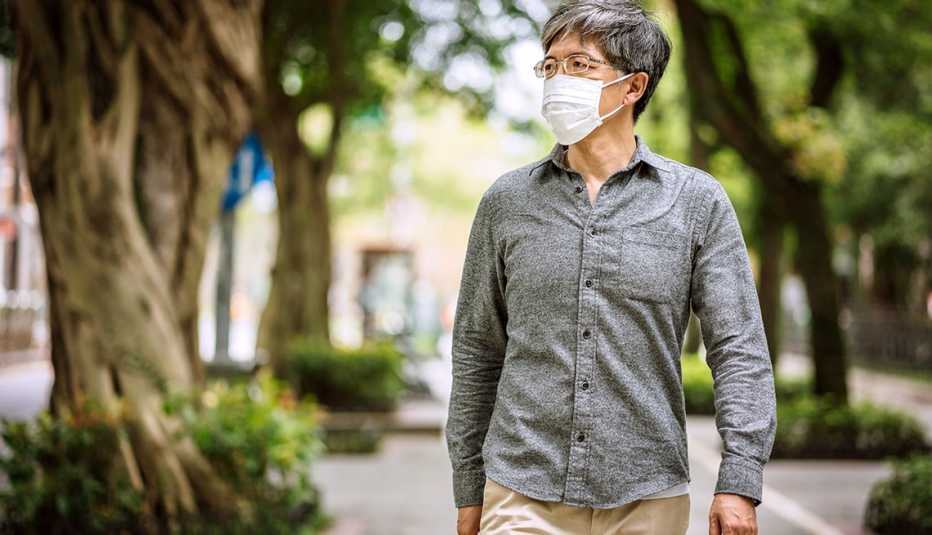Staying Fit


You don’t need a fancy medical-grade mask to deter the spread of the coronavirus, but some face coverings work better than others, according to a new study published in the journal Science Advances.
Researchers at Duke University tested the effectiveness of 14 commonly available masks and found that surgical masks and N95 respirators without valves worked the best at blocking respiratory droplets from projecting into the air when a person talks. A variety of double-layer polypropylene and cotton masks also reduced a significant amount of spray from normal speech.


AARP Membership— $12 for your first year when you sign up for Automatic Renewal
Get instant access to members-only products and hundreds of discounts, a free second membership, and a subscription to AARP the Magazine.
Least effective, however, were a bandanna, a knitted mask and a neck fleece (also called a gaiter mask); the last may be worse than wearing no mask at all. The researchers found that the neck fleece they tested — a thin single layer of polyester and elastane (also known as spandex or Lycra) — actually dispersed more spray into the air, not less. They assume that the material broke down larger respiratory droplets into smaller particles.
5 Most Effective Masks
Fitted N95 (no exhalation valve)
- 3-layer surgical mask
- Cotton-polypropylene-cotton mask
- 2-layer polypropylene mask
- 2-layer cotton pleated-style mask *
*Researchers tested three 2-layer cotton pleated-style masks. See the full study for photos and specific design details of all masks tested.
3 Least Effective Masks
- Gaiter-type neck fleece
- Double-layer bandanna
- Knitted mask
Source: Duke University
“Considering that smaller particles are airborne longer than large droplets (larger droplets sink faster), the use of such a mask might be counterproductive,” the researchers wrote.
Martin Fischer, director of the Advanced Light Imaging and Spectroscopy facility in the Duke Department of Physics and coauthor of the study, said in an online video interview that the research was not a systemic study of mask materials but, rather, was done to establish a simple way to test the effectiveness of masks.
“Overall, the majority of those masks we tested work just fine,” he said.
As to the gaiter, Fischer noted that they tested only one they had on hand and it was thin enough to see through when held up to the light. Gaiters made of thicker materials or folded over would likely produce different results.
“We haven’t tested them. I’m convinced the results would be different. They might be better,” Fischer said.
Linsey Marr, a professor of civil and environmental engineering at Virginia Tech, who studies aerosols, was skeptical of the Duke testing method and conducted her own test on two types of gaiters, following National Institute for Occupational Safety and Health (NIOSH) standards.

































































More on Health
How to Sew a Quick and Easy Cloth Face Mask
With medical-grade masks in short supply, try making a DIY alternativeCDC Recommends Americans Wear Cloth Face Masks in Public
Experts stress handwashing and social distancing are still crucial to slowing spread